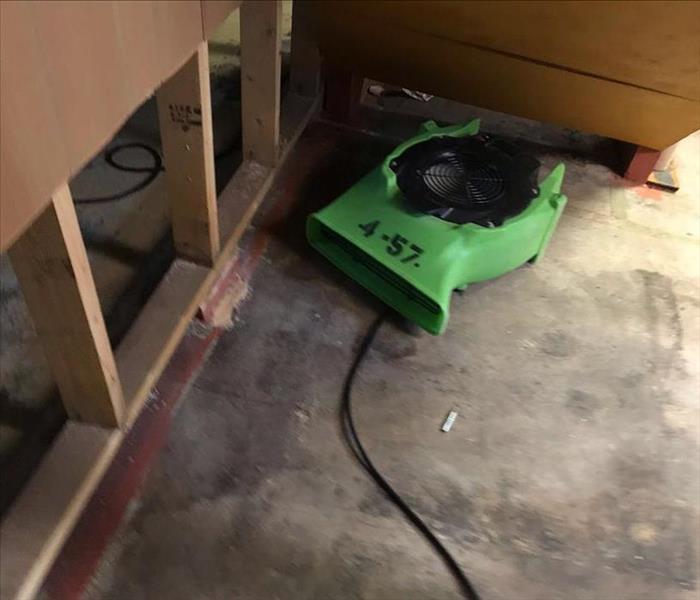4 Types of Secondary Water Damages That Can Be Avoidable
3/15/2021 (Permalink)
Secondary water damages can be avoided when the right team of professionals arrives!
Water damages are single-handedly any homeowner's worst nightmare. The only thing that can make matters worse is secondary water damage. Not only is it a nuisance to deal with it, but if left unchecked, it can cause some serious damage to your home or business.
But no need to worry; with this quick guide on secondary water damage, you'll know how to handle the situation in no time!
What is Secondary Water Damage?
Secondary water damage is damage that occurs when primary water damage is left unattended to or is not properly resolved. Secondary water damage causes the water to seep deeper into your house's structure, and the more thorough the water infiltration, the worse the damages will be.
Typically, with secondary water damage, the level of damage is unknown until professionally inspected. You need to have your property professionally inspected because the source and the exact cause of the damage may not be easy to discover, making it difficult to mitigate the water damage issue properly.
Noticing Secondary Water Damage
Believe it or not, secondary water damage is not that easy to spot, at least not right away. Secondary water damage usually works its way from the inside out; weeks or even months can pass before it begins to show any exterior signs. By this stage, substantial damage has already been done, and a reversal will require professional help.
The most common markers of secondary water damage are:
- Rotted drywall
- Buckling floors
- Warped floors
- Peeled vinyl
- Black spots on the wall
4 Types of Secondary Water Damage
Secondary water damage takes form in several different types; it is best to be aware of them all so that you can quickly catch the tell-tale signs.
Type 1: Mold
Mold will typically appear within 24-48 hours of moisture entering a surface or material. Mold spores will keep growing the longer it is left unattended.
Type 2: Corrosion
Corrosion occurs when structures made out of metal, such as pipes and rods, are subject to water damage. Metal materials left to rust can weaken metal structures and possibly cause more water damage when a pipe bursts.
Type 3: Electrical Damage
If water damage spreads to electrical outlets, it can cause electrical damage. Not only can this cause appliance damage and electricity cuts, but it can also prove dangerous through electrical shocks.
Type 4: Rotting Wood
Issues of rotting wood are once again caused by persistent exposure to water, and if these are not tended to then, this could affect the integrity of your house's structure.
What causes secondary water damage?
While it's evident that secondary water damage is caused by persistent and continued exposure to water, it is more specifically the result of a lack of action than anything else. Water damage will progress to secondary water damage if a prompt response is not given when a water disaster strikes! Secondary water damage makes treatment both more time-consuming and difficult.
The best course of action is to call a professional water restorer as soon as you notice any signs of ceiling water damage or water seeping through the floor. While you wait, try to investigate the source and see if a temporary fix can be found to prevent further secondary damages. Remember, the only real way to prevent secondary water damage is to ensure that the water is completely extracted and dried in the first place.
So, there you have it, a quick and easy guide to all the basics of secondary water damage. Know you know what to look out for when your property undergoes water damage.
Contact us as soon as possible if your property has recently had water damage. When we receive your call, we will act quickly to avoid secondary water damage at your property!

 24/7 Emergency Service
24/7 Emergency Service
